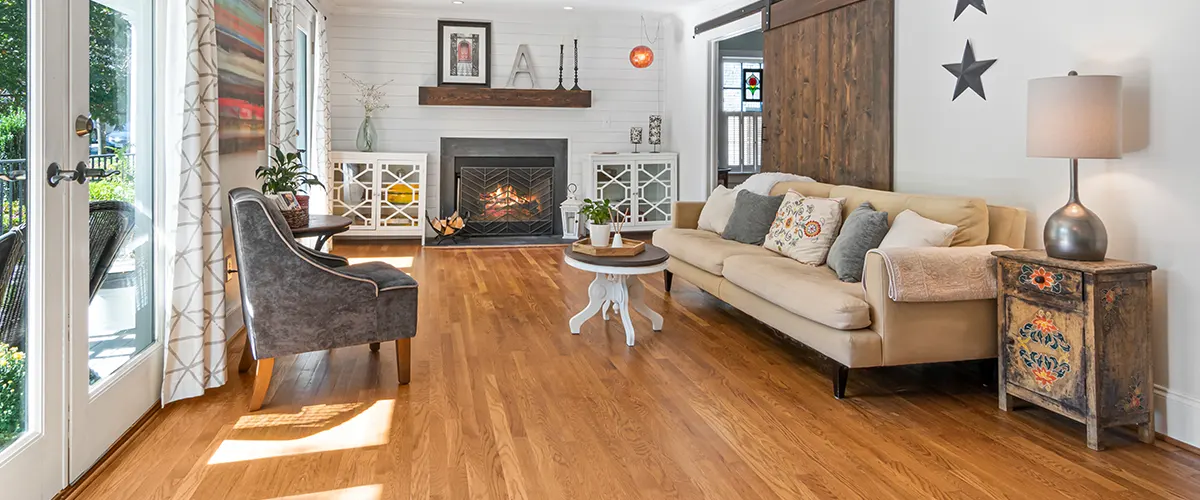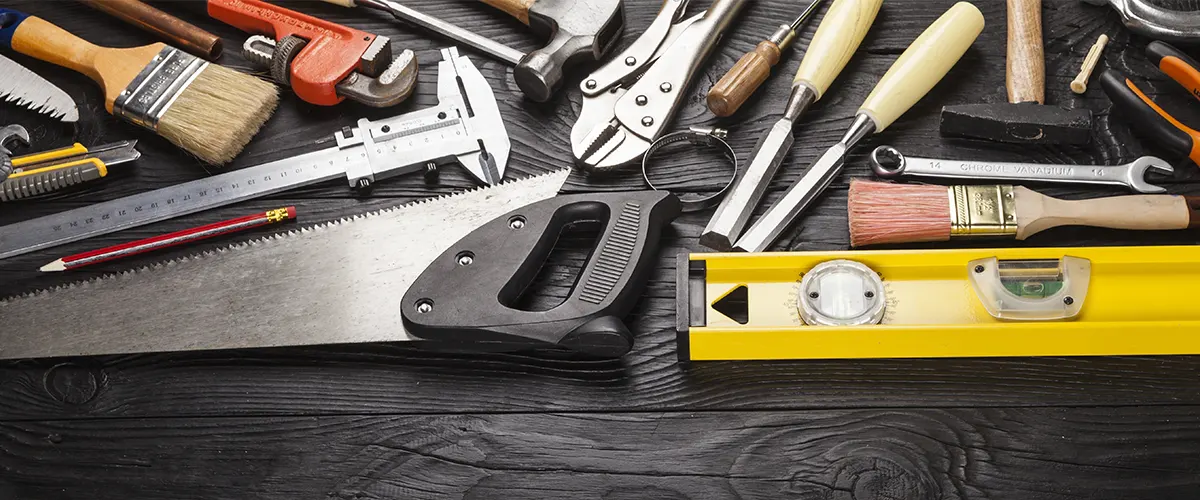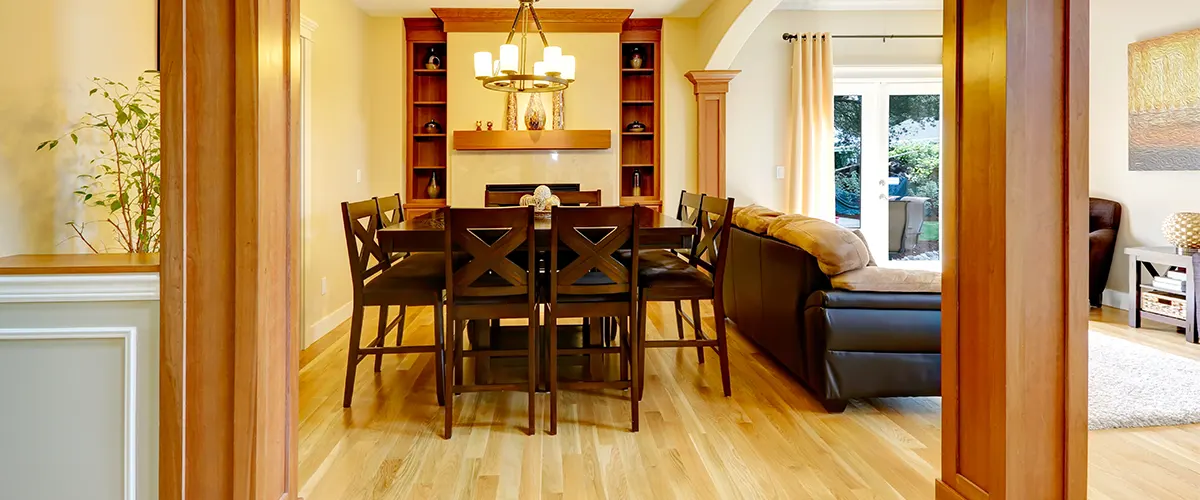What Are Hardwood Floors?
Hardwood floors are a type of flooring that is made from hardwood lumber. They are a popular choice for homes because they are durable and beautiful. They can last for decades if properly cared for, and they add value to your home.
There are many different types of hardwood flooring materials, including oak, maple, cherry, and walnut. The type of hardwood you choose will depend on your personal preferences and the style of your home.

The Benefits of Having Solid Hardwood Flooring
There are many benefits to installing hardwood flooring in your home. Some of the most notable benefits include:
- Durability: Hardwood floors are incredibly durable and can last for decades with proper care.
- Aesthetics: Hardwood floors are beautiful and can add value to your home. As opposed to laminate flooring, hardwood has a timeless appeal that can match any home.
- Ease of Maintenance: Hardwood floors are easy to care for and only require occasional sweeping and mopping.
Tool and Materials
There are a few things you need to keep in mind when it comes to hardwood flooring. First, consult the instructions that came with your flooring. This will give you a good idea of what tools and materials you need.
You may need a pneumatic flooring nailer, drill and drill bits, hammer, nails, pry bar and saw. Make sure you have all of these tools ready and within reach before you start your installation.
Once you have everything you need, follow the instructions carefully to ensure a successful installation. With a little bit of planning and preparation, you can have beautiful hardwood floors that will last for years to come.

How to Install Hardwood Floors
Installing hardwood floors is a relatively simple process that can be completed with a decent effort. The first step is to select the type of hardwood you want. Once you’ve selected the hardwood, you’ll need to measure the area where the hardwood will be installed and calculate the amount of hardwood you’ll need for your existing floor.
Next, you’ll need to prepare the area for installation. This involves removing any existing flooring and making sure the subfloor is level. Once the area is prepared, you can begin installing the hardwood.
To install hardwood, you’ll need to start by laying down a layer of underlayment. Once the underlayment is in place, you can begin attaching the hardwood planks to the subfloor using nails or screws. Start at the edge of the room and work your way in, making sure to stagger the joints as you go.
Once all the hardwood is installed, you can trim any excess material and install baseboards or molding to finish the job.

Tips for Installing A Hardwood Floor
- Solid wood flooring should be installed over ¾-inch plywood on or above grade—not in a basement and never directly on concrete. Always follow the manufacturer’s instructions.
- To determine the amount of flooring you’ll need, multiply the length times the width of the room to get the square footage, then add 10 percent for waste and damaged boards.
- Install hardwood floors perpendicular to the floor joists, parallel to the longest wall, leaving a ¾-inch expansion gap around the perimeter.
- Join the ends of the boards over a floor joist, where possible, avoiding joints that form an H.
- Keep joints that are more than 8 feet apart staggered.
- If you must install hardwood floors in a room with only one door, lay the boards parallel to the door.
Closing Thoughts
If you’re considering adding hardwood floors to your home, we hope this article has given you a good overview of what’s involved. Hardwood flooring is a beautiful and timeless addition to any space, and with the right preparation and installation, can last for decades. If you’re ready to take the plunge and reenvision your home, get in touch with our team – we would be happy to help with your hardwood floor installation!
